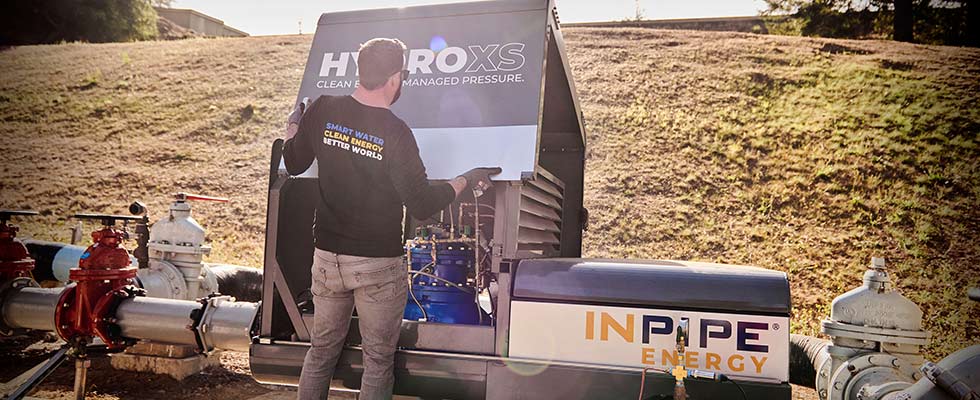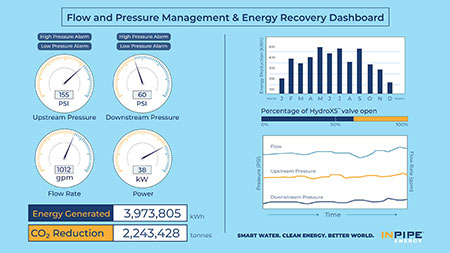
For 2.2 million people in Houston, the impacts of the late 2022 loss of power are still fresh in their minds. Suddenly faced with a lack of clean water, people everywhere fired up their stoves to boil water. Power failures are not surprising anymore. There was a similar grid failure in Houston in 2021 where 4.5 million people were impacted by water, power, heat and food shortages and more than 240 died. Power failures are common. Not just a concern for Texans, power grids across the globe are stressed and unreliable.
For many, thoughts about clean water and reliable power lead to other concerns. The unfortunate combination of unreliable power sources and unpredictable weather, including storms, droughts,
floods, wildfires and other climate disruptions, keep utility managers, engineers and first responders up at night. They all lead to water shortages, contaminated water and colossal water infrastructure failures.
It is possible to make great strides in creating programs that address all these problems at the same time. Here is one solution that serves multiple functions.

The solution stands at the nexus of water and energy in a system that provides a reliable supply of safe, clean drinking water while being more efficient, productive and sustainable. Saving water, decarbonizing, minimizing disruption and generating money to reinvest and upgrade infrastructure can now be done with a simple installation that could be funded largely by the government.
Water is power—consuming energy and creating it at the same time. The process of pumping, treating and distributing America’s water and wastewater accounts for 6% of the nation’s energy consumption, contributing 5% of its carbon emissions and 40% of a utility’s budget. All this energy is consumed to power pumps, treat water and distribute the water to users. As electricity costs rise, the cost of these processes weighs heavily on the industry and its users.
Even when water providers initiate conservation efforts, failing infrastructure limits their effectiveness. The United States loses 17% of its treated water, called nonrevenue water (NRW), to fractured distribution systems. The World Bank estimates broken distribution lines release 8.6 trillion gallons of NRW annually.
Global water distribution systems highlight the interconnected nature of energy and water resources. The industry term used to describe this interconnectivity is the nexus of water and energy.
Water distribution networks rely on fossil fuel-rich grid power to operate, and they directly contribute to water scarcity because of the unnecessary carbon they add to the atmosphere in the process of treating, pumping and delivering water to their users.
There is innovation happening in the water and wastewater sectors. In recent years, academics, entrepreneurs and water innovators have worked together to address some of the most pressing challenges for the industry.
Managing Water Loss & Reducing Carbon Footprint
As energy costs rise, climate change and water loss increasingly impacts water and wastewater systems.
Energy recovery that integrates control valves with micro-hydro technology enables water distribution itself to be the solution for each of these enormous challenges. Recent advances in micro-hydro turbine technology empowers water innovators to leverage the wasted pressure emitted by control valves. By leveraging existing flow and pressure differentials, this solution recaptures wasted energy from pressurized pipelines to return remarkable amounts of electricity to the local grid. This generated electricity can be used to save money that can be reinvested into operations, save water and reduce carbon emissions. It also provides what the industry needs most as it modernizes: real-time data about flow and pressure that is essential to water loss control. Now, water providers can analyze pressure data to identify problems within specific distribution zones (district metered areas) before they experience leaks and main breaks.
It is an early warning system for operators. There are an estimated 2 million control valves in the U.S. and 5.7 million globally. Deploying in-conduit micro-hydroelectric energy recovery systems in the U.S. would offset 290 million metric tons of CO2 annually in the U.S. and 1.75 gigatons worldwide.
Federal Government to the Rescue
There is some good news. For U.S. water utilities focusing on decarbonizing, federal funding is available. The Environmental Protection Agency (EPA), Department of Energy (DOE) and Internal Revenue Service (IRS) all have funds available that benefit cities and water utilities. Funding from programs like the Inflation Reduction Act now includes a direct pay option for tax-exempt entities. As a result, utilities can now provide funding for water loss programs and pay for it all through federal funding when combined with energy generation from energy recovery systems.
Operational Results
Energy generation products are proven technology. Across the U.S., in-conduit micro-hydroelectric generation plants are already producing renewable energy, alleviating energy costs and tracking distribution flow and pressure data. Simply replacing traditional pressure regulating valves or control valves with energy recovery systems provide these entities the necessary controls with the added features of energy production and pressure zone data to detect faulty distribution lines.
Hillsboro Public Utility District (PUD) serves 112,000 residents outside of Portland, Oregon. The district serves the city of Hillsboro, which set a sustainability goal to reduce the city’s square foot energy consumption by 60%. Taking this goal seriously, the district paired with an energy supplier to install an energy recovery system at one of their pressure reduction facilities. This project has been up and running without incident since July 2020. It generates 200,000 kilowatt-hours (kWh) of electricity per year and yields a million dollars’ worth of savings over the project life. It also eliminates more than 1,700 tons of carbon, providing hydraulic data, energy production and carbon reduction data in real time to track operations, NRW and sustainability goals.
In Mount Vernon, Washington, the Skagit PUD installed an energy recovery system at its Division Street Pump Station where it manages water pressure and control flow in one facility. With the system, the station now converts excess pressure into renewable energy to offset expensive, fossil fuel rich electricity from the pumping load at this facility. This project has been up and running for more than 18 months without incident. A second project is being planned to power an electric vehicle charging station at a local high school, all from the otherwise wasted pressure in the distribution of water.
Now is the time for American utilities to look to the future and take advantage of the technologies bridging the water-energy nexus. A small investment to upgrade a distribution system’s control valve could be the key to fighting climate change, high energy costs, water loss and upgrading a rapidly deteriorating infrastructure.

